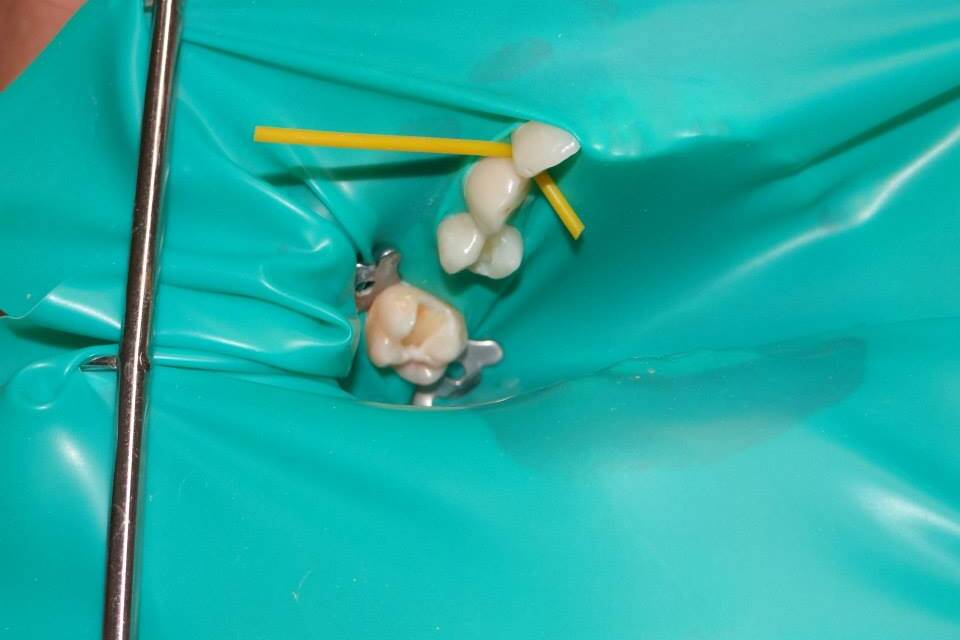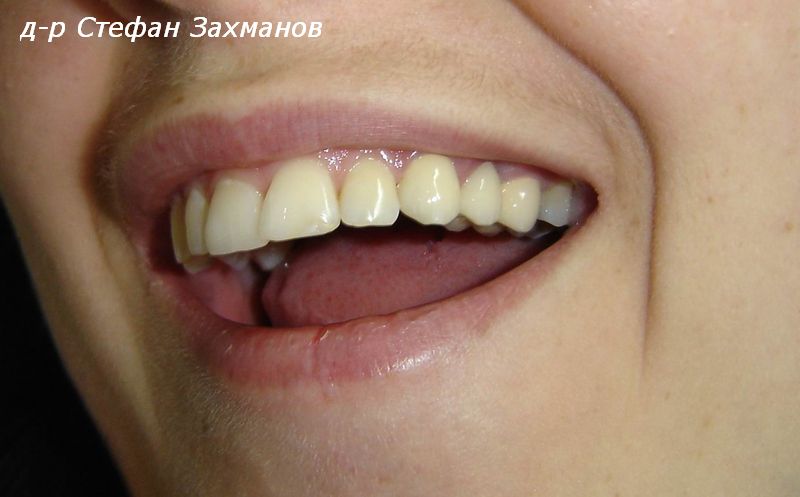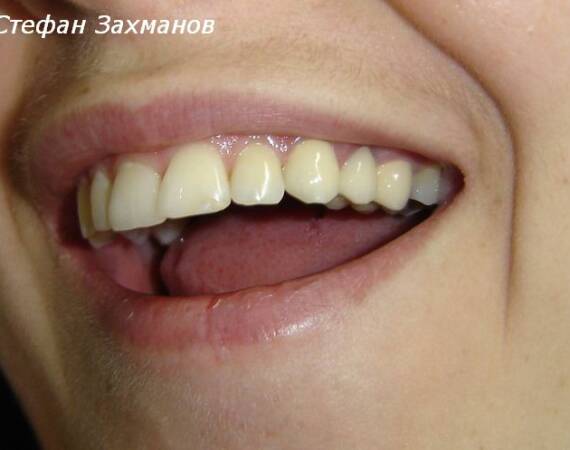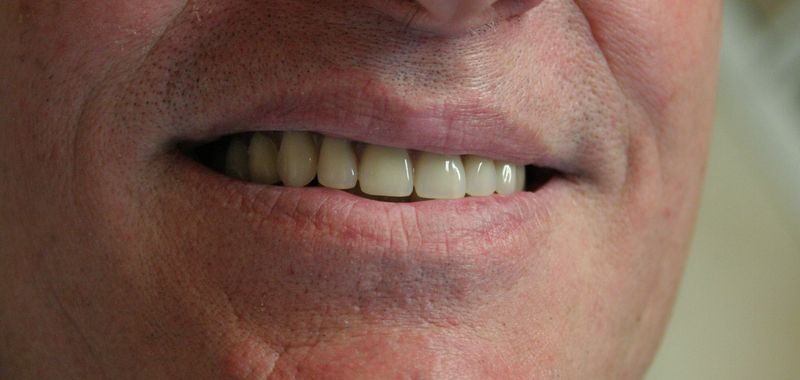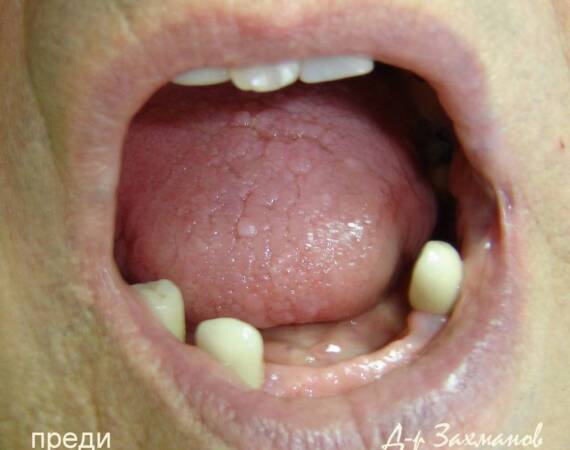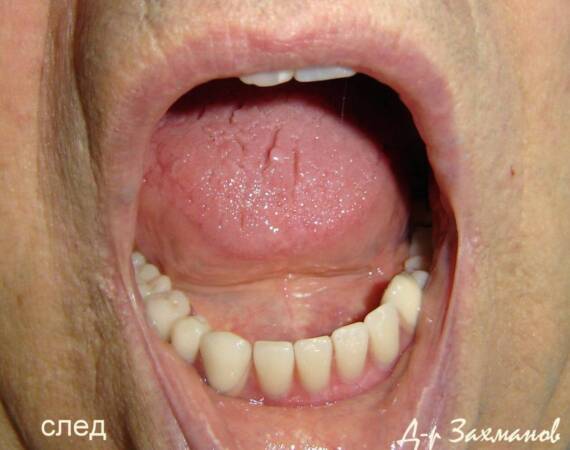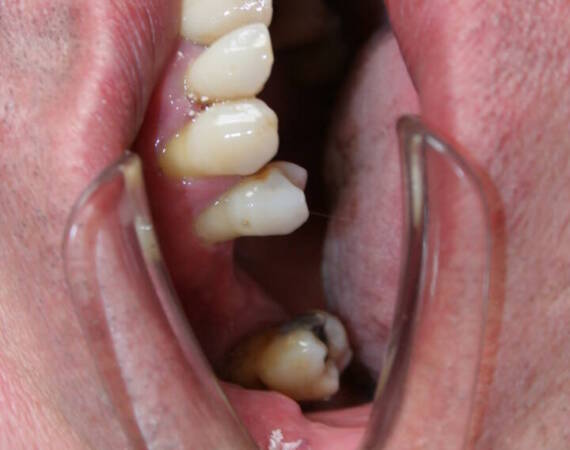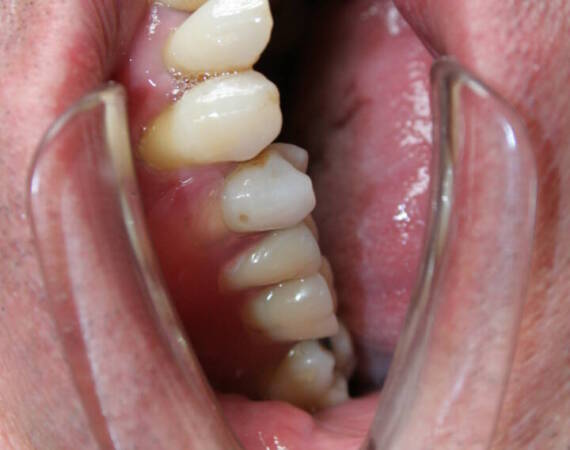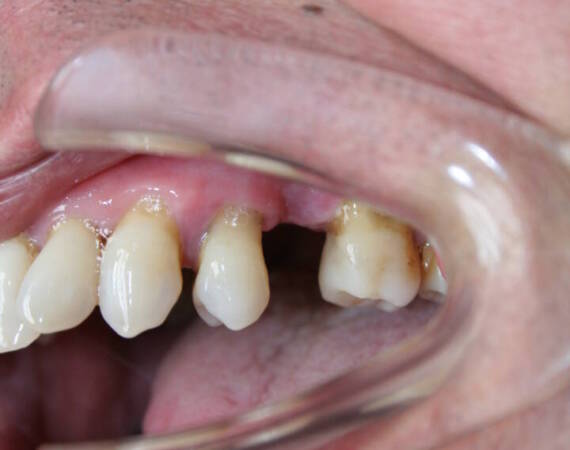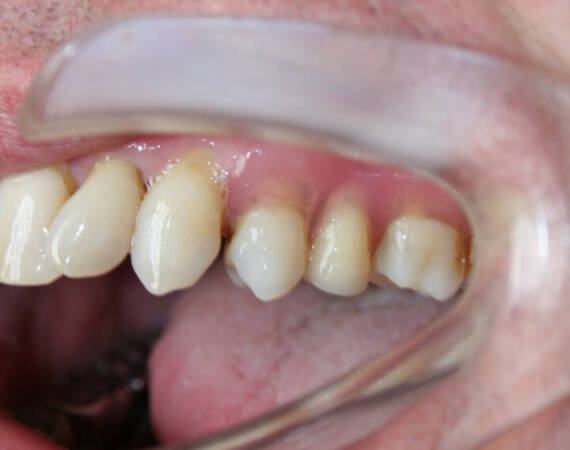Prosthetics
Dental prosthetics is necessary in case of disruption of the dental rows - presence of missing teeth. The purpose of dental prosthetics is:
- to help you chew comfortably again;
- to improve the aesthetics of your teeth, which will allow you to smile freely;
- and last but not least to protect the teeth from thinning and destruction.
Sometimes as a result of caries or fracture (breaking off), the tooth is so destroyed, that it cannot be restored with composite materials or amalgam alone. The only solution in such cases is the crown.
What are crowns??
The crown is a restorative structure, which covers the tooth like a hat, restoring it to its normal shape and size, increases its strength and improves the manner, what he looks like.
Types of crowns?
According to the material from which the crowns are made:
- metal
- metal ceramic
- all ceramic
- zirconium
All metal crowns
One of the metals, that are used is gold, and base metals with the required strength can also be used. Depending on the position of the crown in the tooth row, crowns in the visible area may have plastic veneers, which isolate the metallic color of the crown and make it more aesthetic. This type of crowns is almost never made in our practice due to unsatisfactory aesthetics.
Metal-ceramic crowns
Metal-ceramic crowns are very popular and used as a standard. Most people prefer them because of the fact, that with them the metal part is completely covered by porcelain and is not visible in the oral cavity.
Porcelain crowns
Porcelain crowns have exceptional aesthetics and are best suited for restorations in the frontal area. Due to the fact , that they do not contain metal, light passes through them as through natural tooth structures, so they look natural .
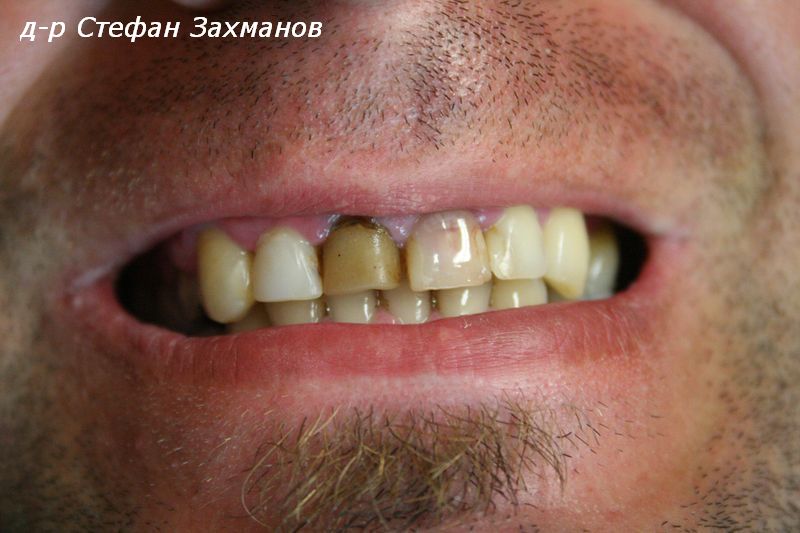
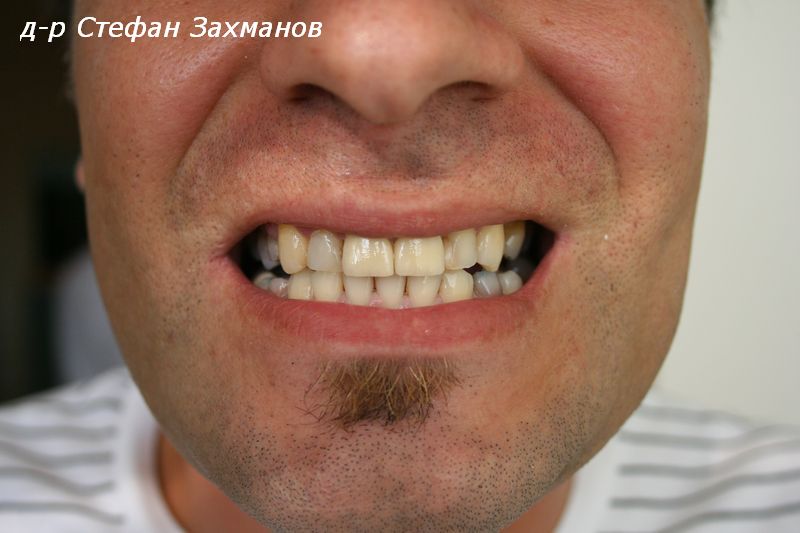
Dressing the two central incisors with ceramic crowns (metal free). Unlike metal-ceramic crowns, there is no metal in ceramic crowns . This contributes to better aesthetics because the light passes through the crown without being blocked by the metal.
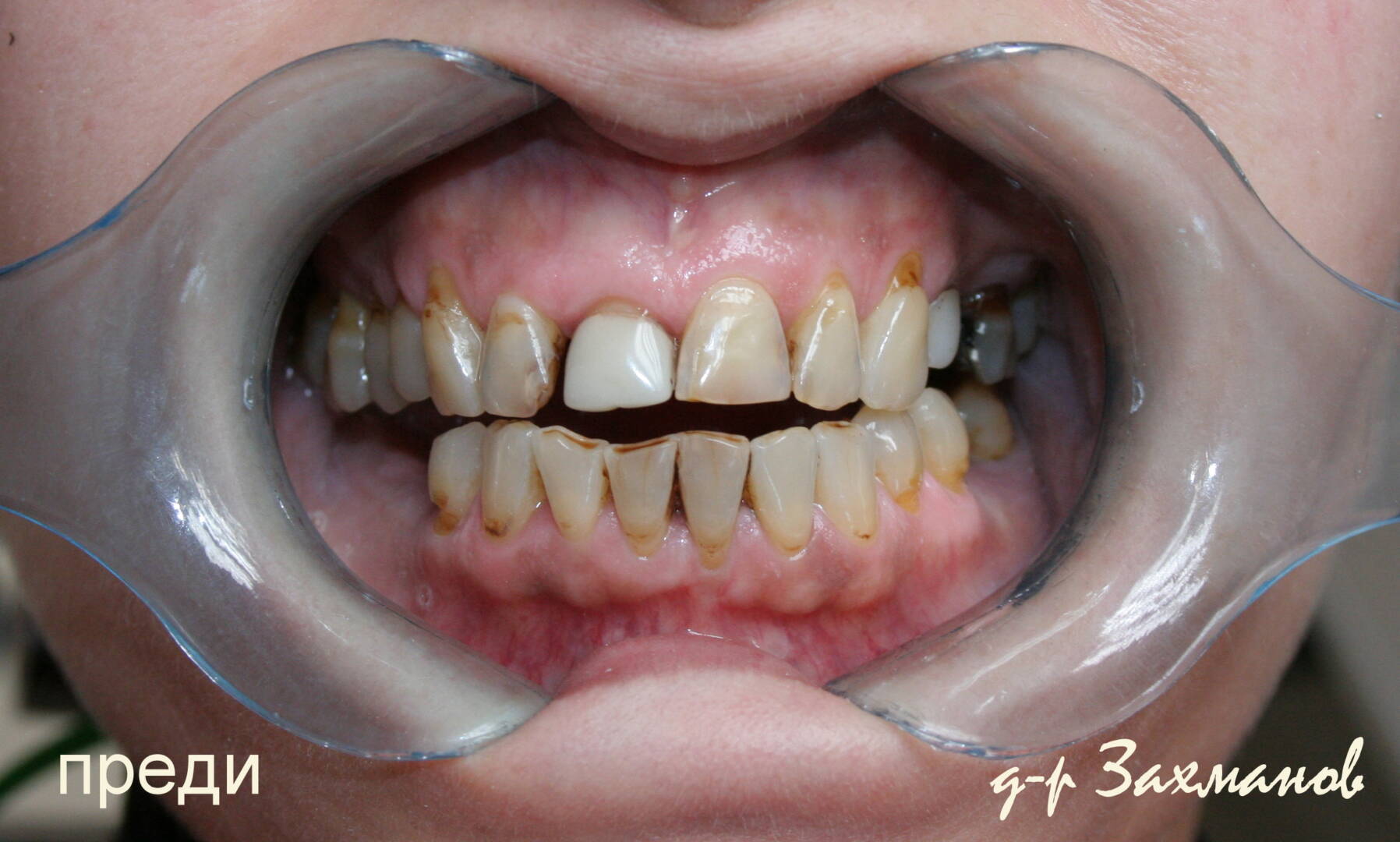
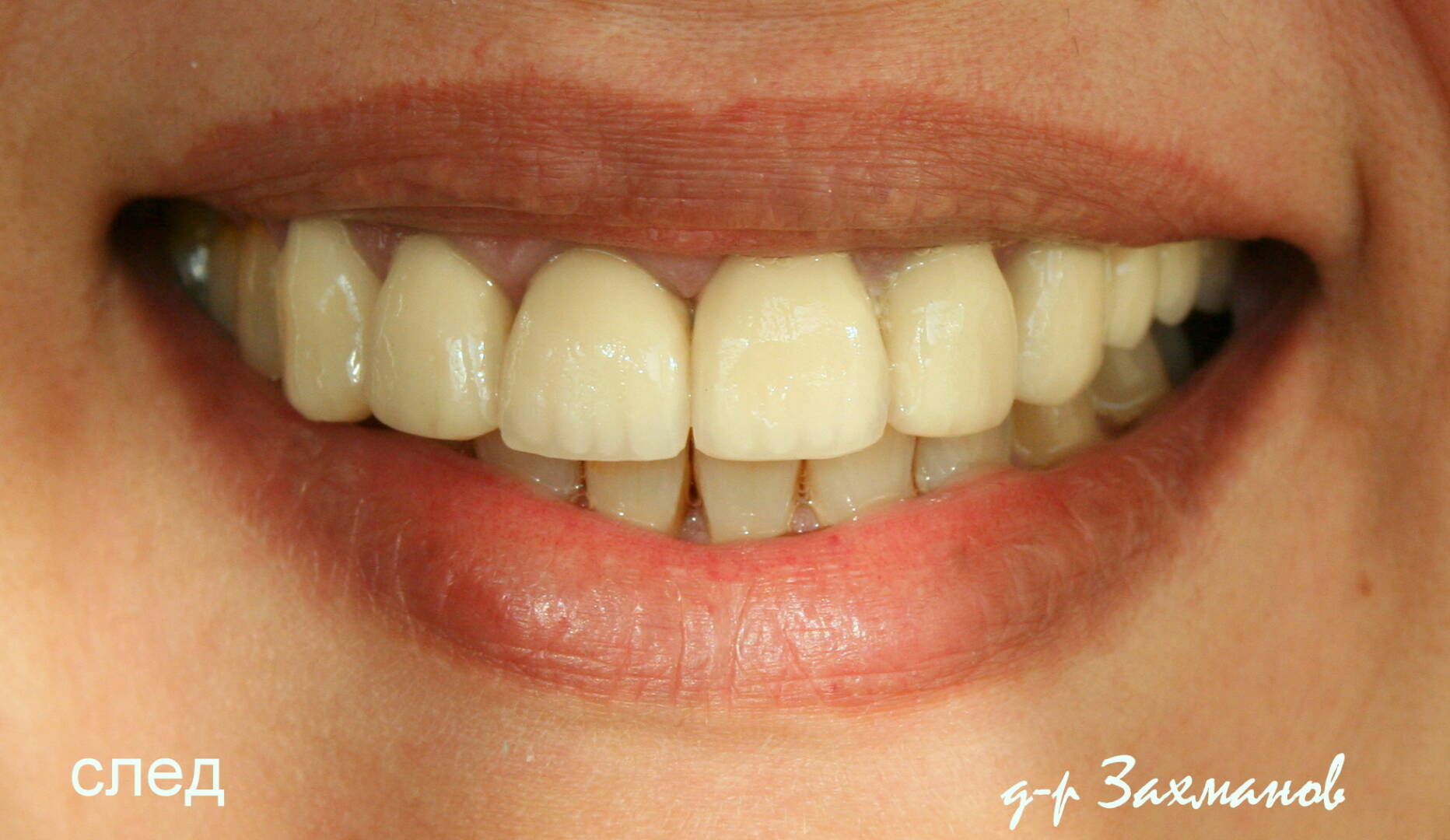
A completely changed smile after dressing the teeth in ceramic crowns.
Zirconia crowns
Zirconium crowns - a modern method of prosthetics. There are several systems for making such crowns. They provide exceptional precision and fit to the filed tooth. Apart from achieving aesthetics, the biological tolerance is comparable to that of the natural tooth. Zirconia is definitely the strongest modern ceramic material in dentistry known so far. Zirconia crowns are made in two stages, in the first stage, a cap is made of Zirconium using the CAD-CAM technology method by a computer and in the second stage, the cap is covered with a cosmetic ceramic mass by a dental technician.
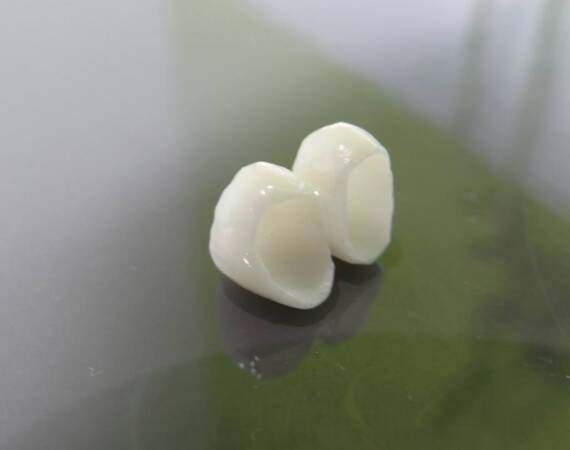
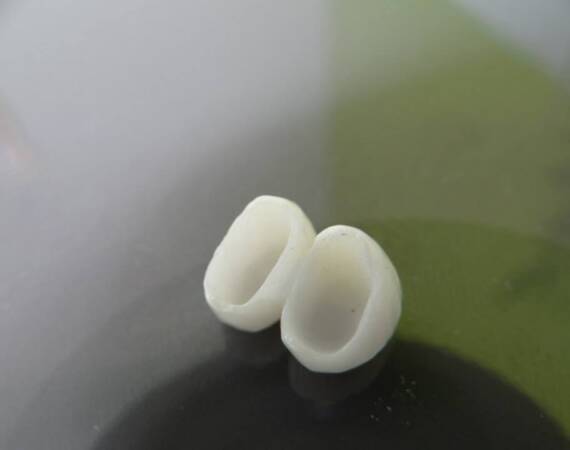
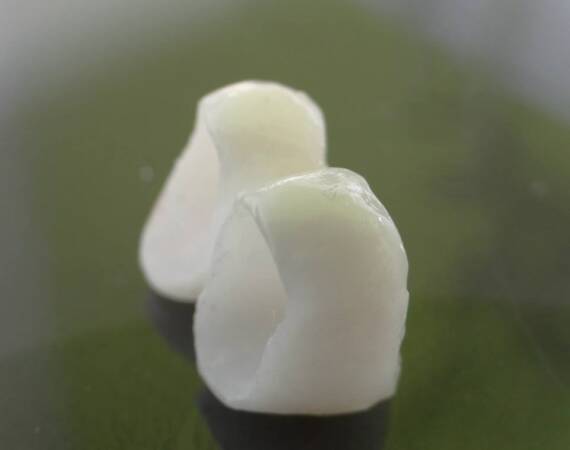
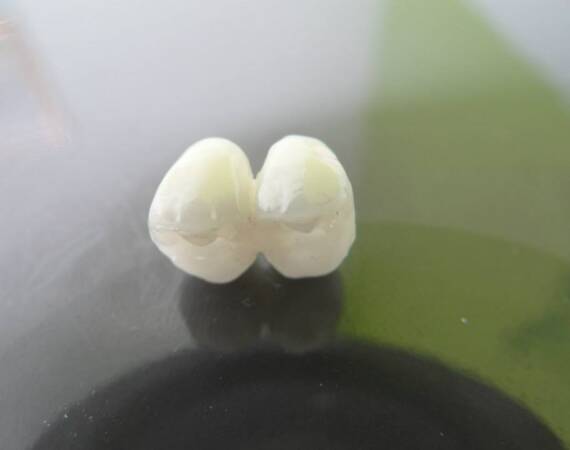
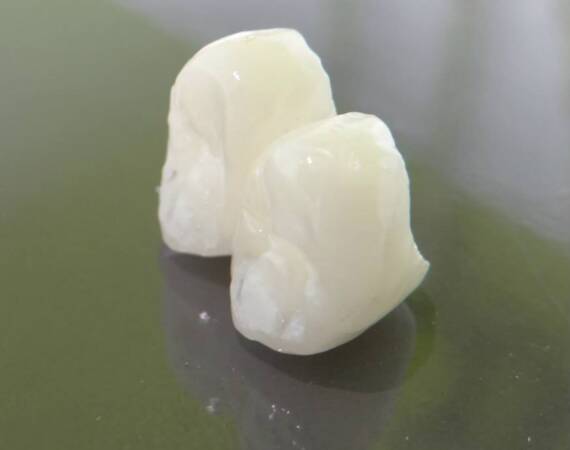
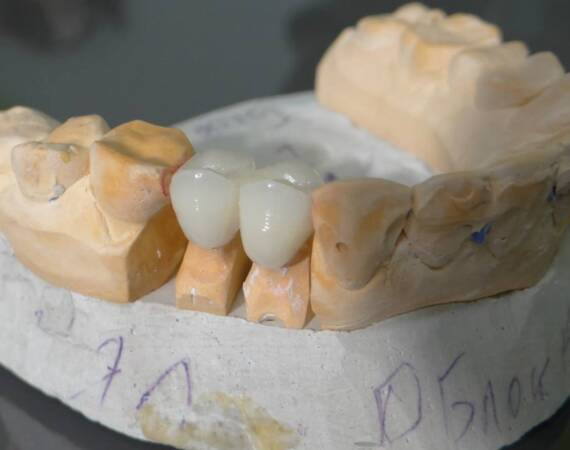
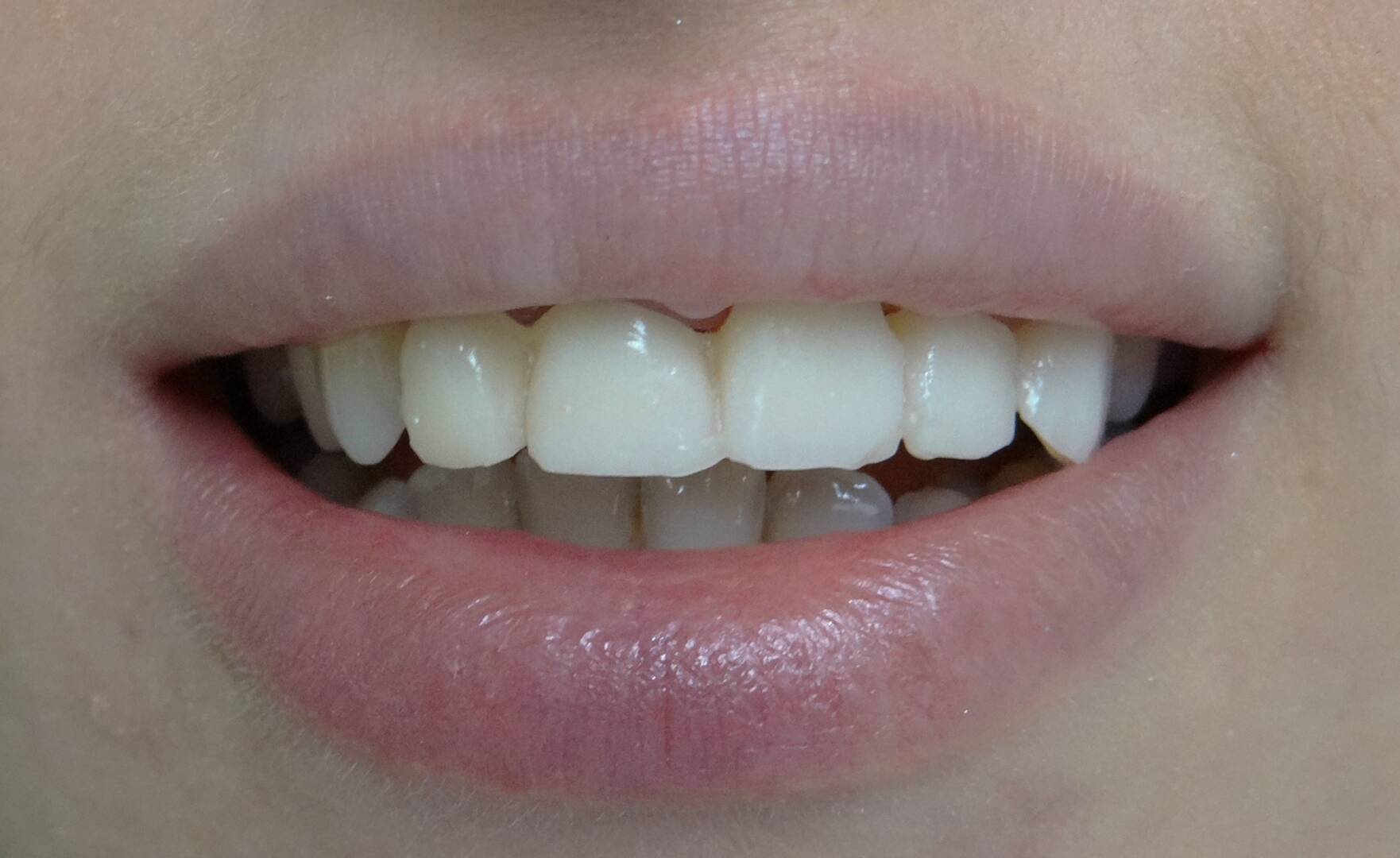
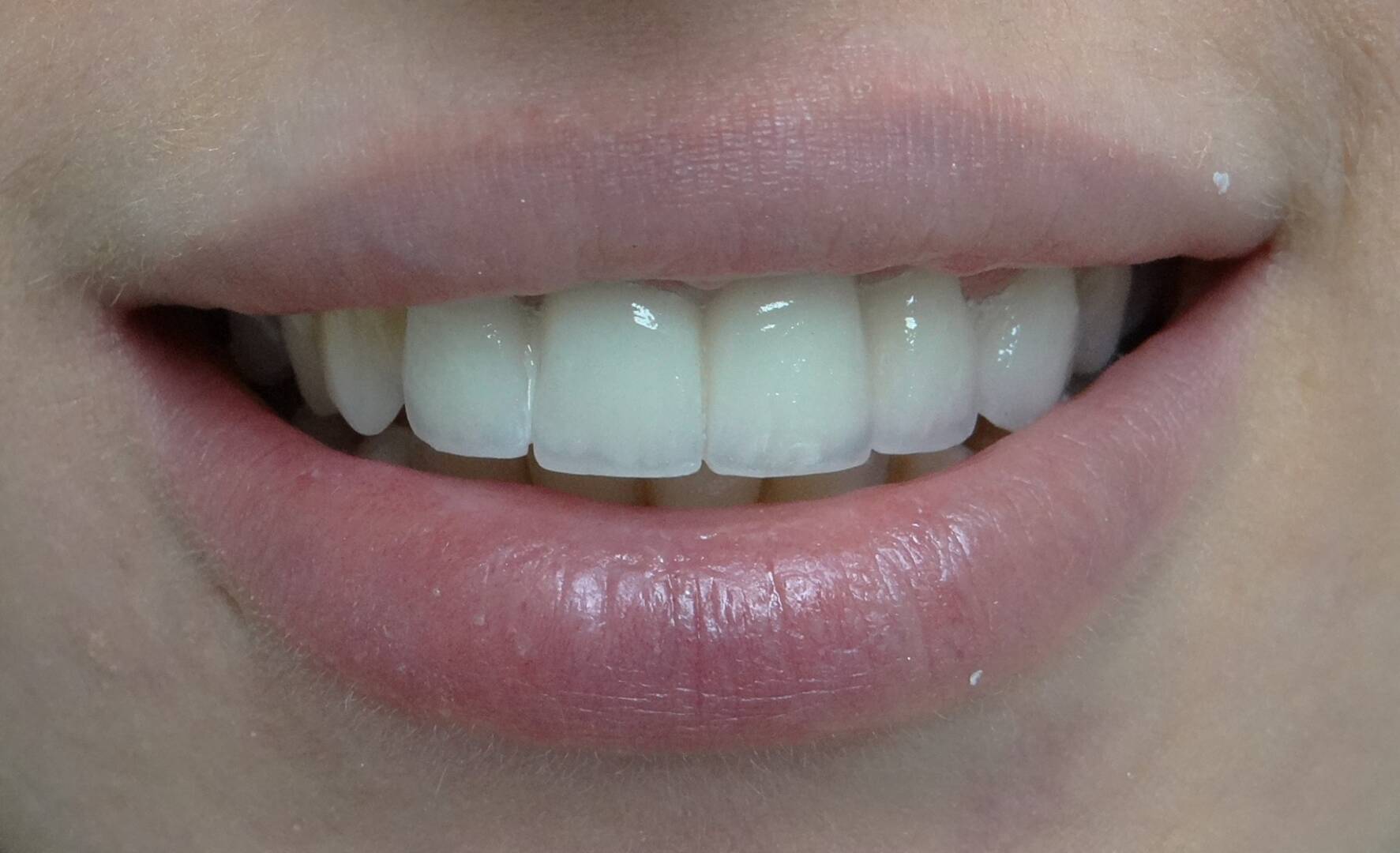
Replacement of old crowns with zirconium ceramic.
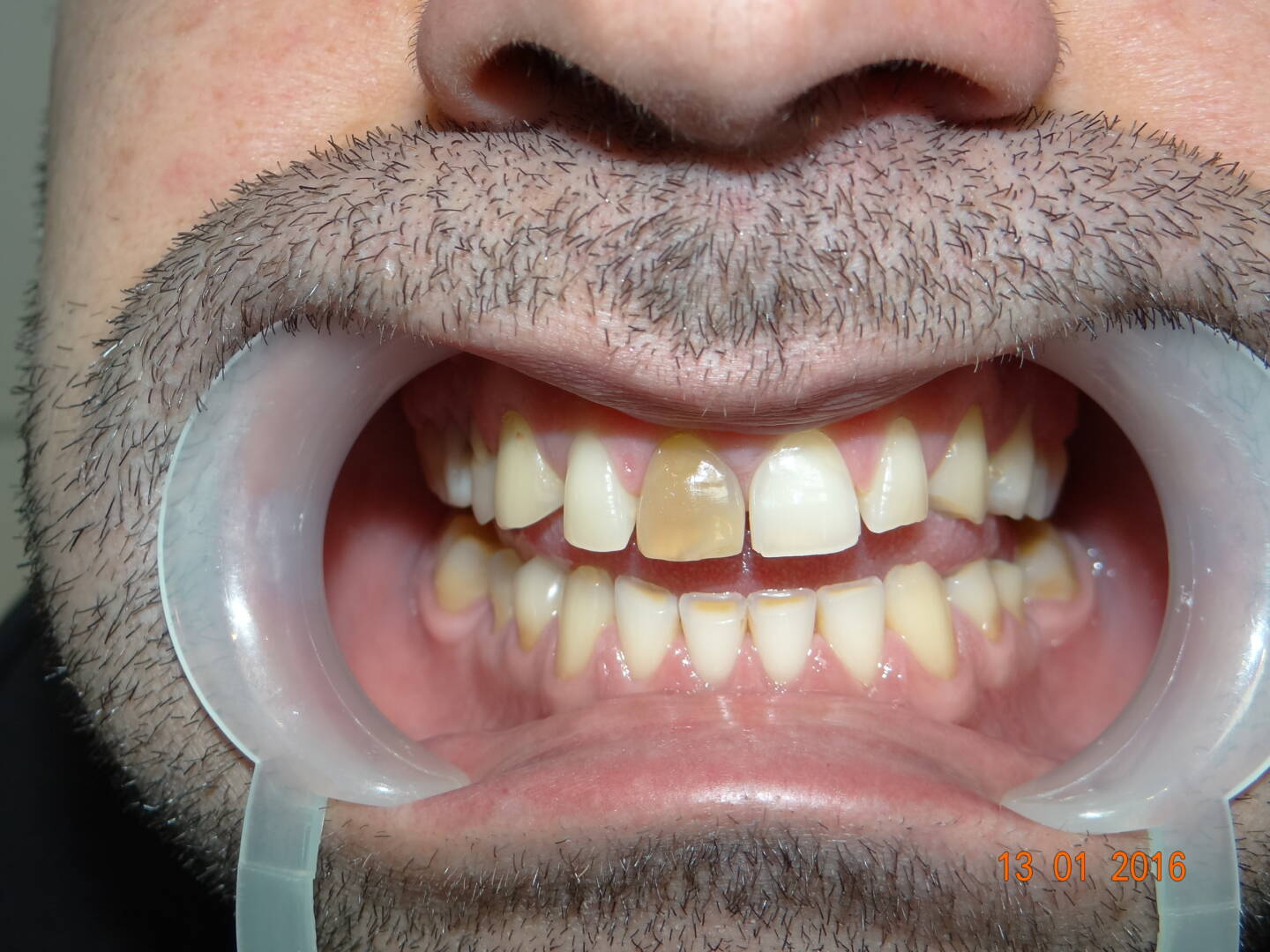
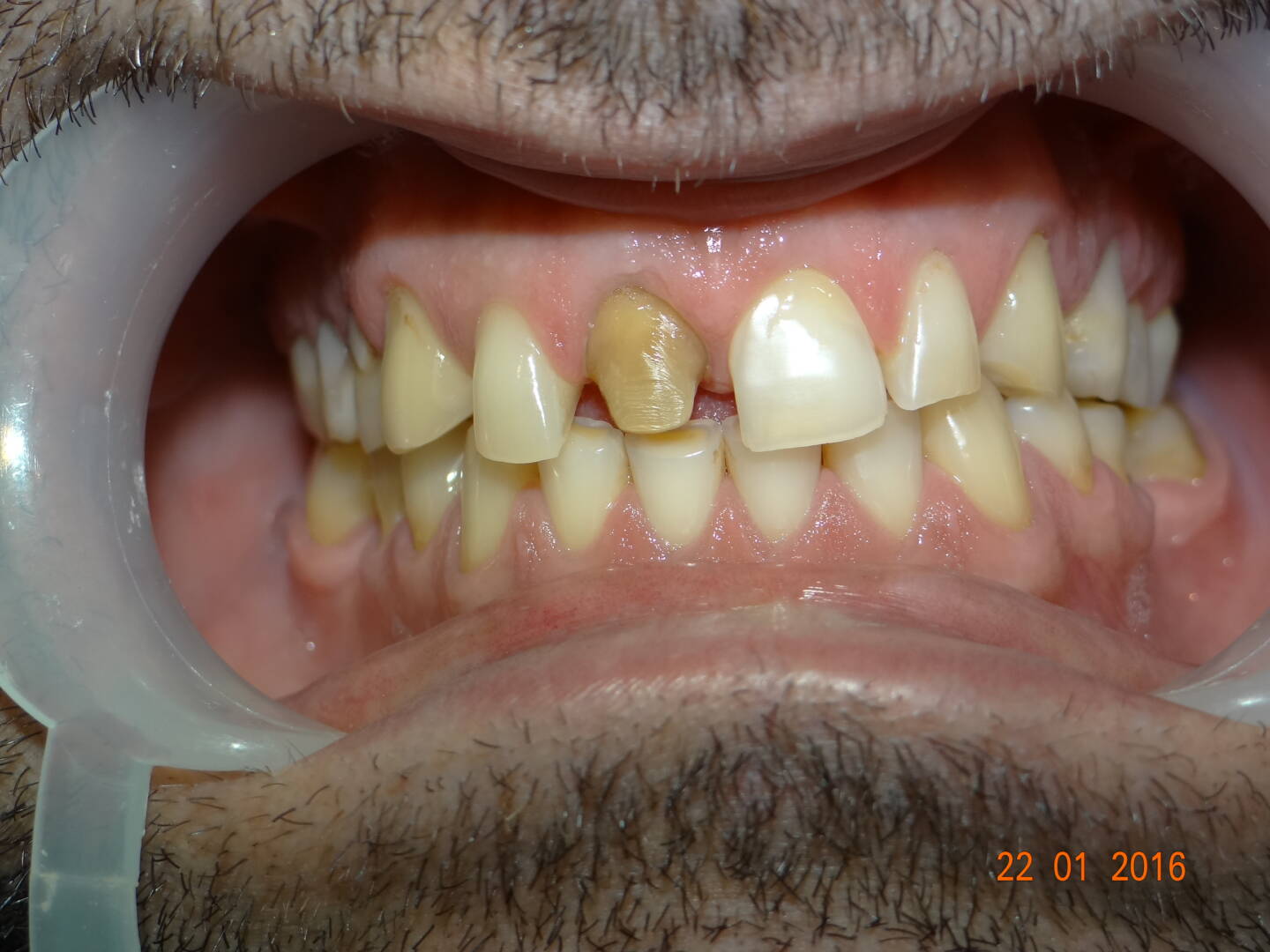
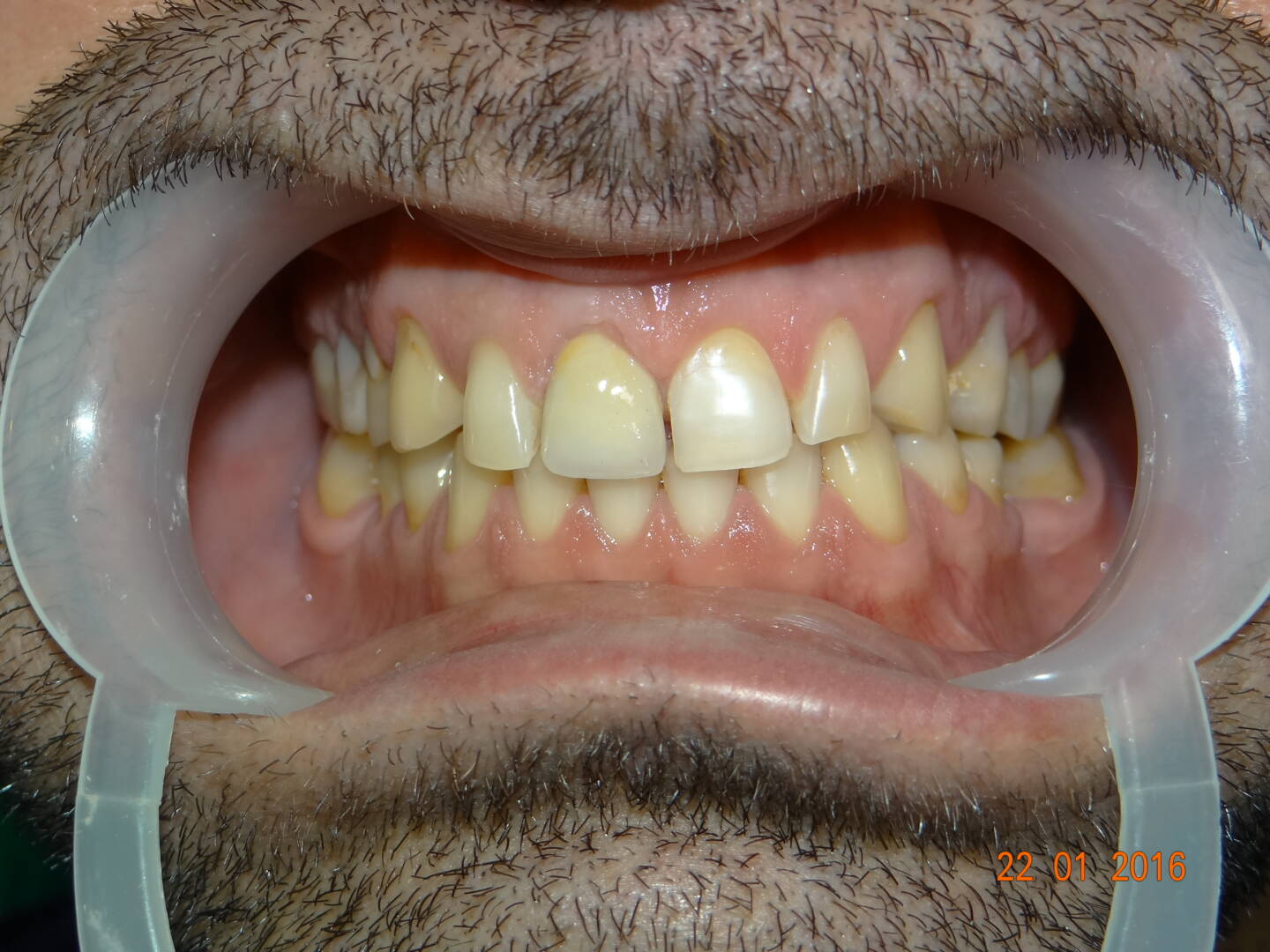
Zirconia ceramic crown – combination of strength and aesthetics.
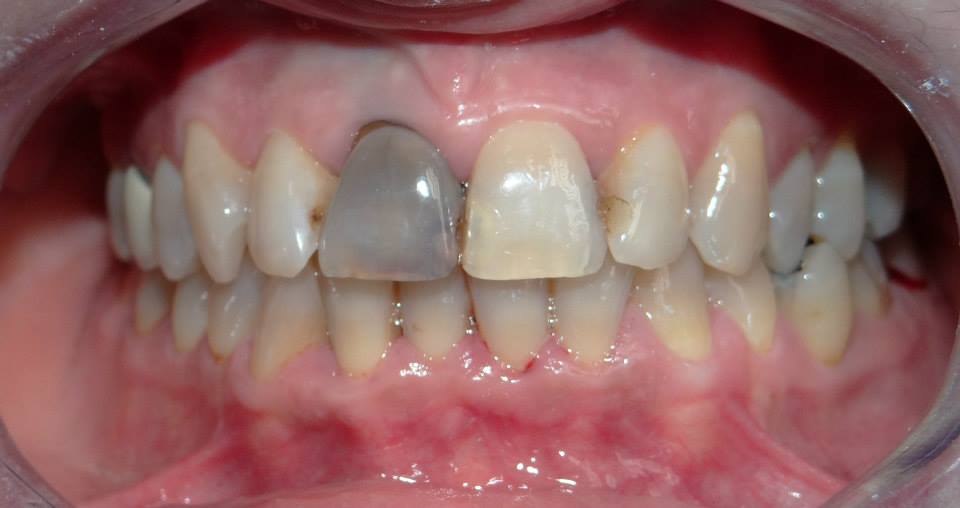
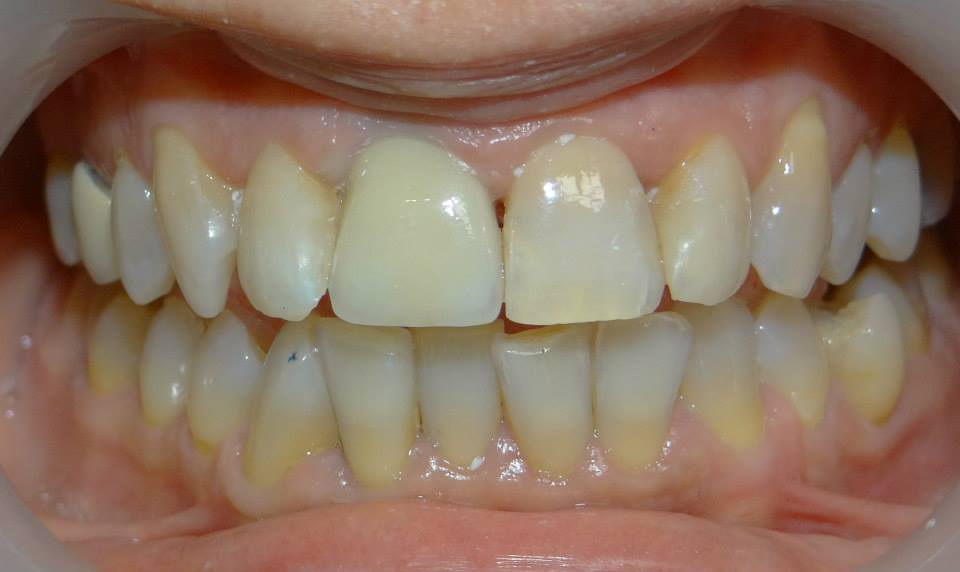
Zirconia crown on an unsightly colored central incisor.
Bridges
Bridges are made in cases of extracted teeth. They fill the place of one or several missing teeth. They are fixed in the mouth. They restore the impaired chewing function, speech and aesthetics are improved. Bridges vary depending on the material used:
- metal or gold with a plastic facet
- metal ceramic
- ceramic structures on zirconium oxide
- adhesive bridges
This bridge is suitable for patients who have one missing tooth and do not want an implant or a classic bridge where adjacent teeth are filed. The missing tooth is 'glued'’ for the adjacent teeth with the help of fibers.
In our practice, we use everStick C fibers&B https://www.youtube.com/watch?v=t2iPXc-ml1U
Metal-ceramic bridge.
Total prosthetics
Losing all teeth is a very serious medical condition, in which chewing function is affected, speech, the aesthetics, the psyche and self-esteem of the patient, and not long after, the digestive function. Restoring the anatomical-functional unity and balance of the chewing apparatus is a complex and extremely difficult task. The determination and recovery of lost landmarks, determining the basic and individual proportions between the two jaws, the shape of the face, movements and natural appearance is very difficult. The retention and stabilization of prosthetic structures at rest and during function is accomplished by various mechanical, biomechanical, physical and biophysical means and methods. The optimal restoration of chewing, speech, breathing, swallowing and appearance depends largely on the arrangement of the teeth and the shaping of the denture to it.
Even with complete loss of all teeth with the help of total dentures, which are comfortable and beautifully made You will regain your self-confidence and a big smile.
Soft prostheses VALPLAST
Valplast are highly aesthetic and anti-allergic prostheses. They have no metal hooks, spoiling the aesthetics. Valplast are soft and elastic prostheses, which withstand any extreme load - they are virtually unbreakable. Valplast is an American company, who invented the soft prosthesis system. Valplast is also suitable for making microprostheses 1÷2 teeth.
The other "soft" prostheses that we increasingly use in our practice are Vertex Thermosens
Thermosense is innovative, thermoplastic material for prostheses. Based on a combination of polyamide and pigments. Suitable for patients with an intolerance to dentures, does not contain residual monomers does not cause allergic reactions or other sensitivity problems. Prostheses made by Thermosens are practically unbreakable and maximally accurate due to the lack of volumetric shrinkage. The main advantages of Thermosens are:
– low allergy risk
– without volumetric shrinkage
– enables repairs and rebasing
– available in 10 the color
– easy and quick polishing
– good moisture resistance
– suitable for full and partial dentures
Here are some of the most frequently asked questions about Thermosense prostheses:
- Can Thermosens elastic prostheses be repaired? - Yes, any corrections can be made, including rebasing; teeth and hooks can also be added. Furthermore, the repair costs of ThermoSens are significantly lower than other types of flexible prostheses.
- How long can Tarmosens elastic prostheses be used?? – Every dental prosthesis is temporary. Thermosens prostheses can be used for exactly that long, as well as ordinary plaque prostheses. The material, from which they are made does not change with time. The ability to add new teeth and hooks makes them long-lasting dentures.
- Do Thermosens dentures absorb unpleasant odors?? – The material , from which these prostheses are made does not absorb or retain any liquids and odors. However, adequate oral hygiene should be maintained, as with all types of prostheses (dentures to be cleaned after every meal, to use preparations for their cleaning, to be cleaned in ultrasonic denture tubs).
- Can Thermosense total dentures be made? - Yes, Thermosens dentures fit extremely precisely on the palate, and their elasticity and strength, combined with their low weight and translucent structure create greater comfort and a natural look for the patient.
- Do Thermosens dentures change color?? - Not, this is impossible to happen, because the material, from which they are made does not absorb liquids (does not imbibe), unlike acrylic prostheses and Valplast prostheses, and also from natural teeth , which are colored by the use of foods, drinks, etc..


